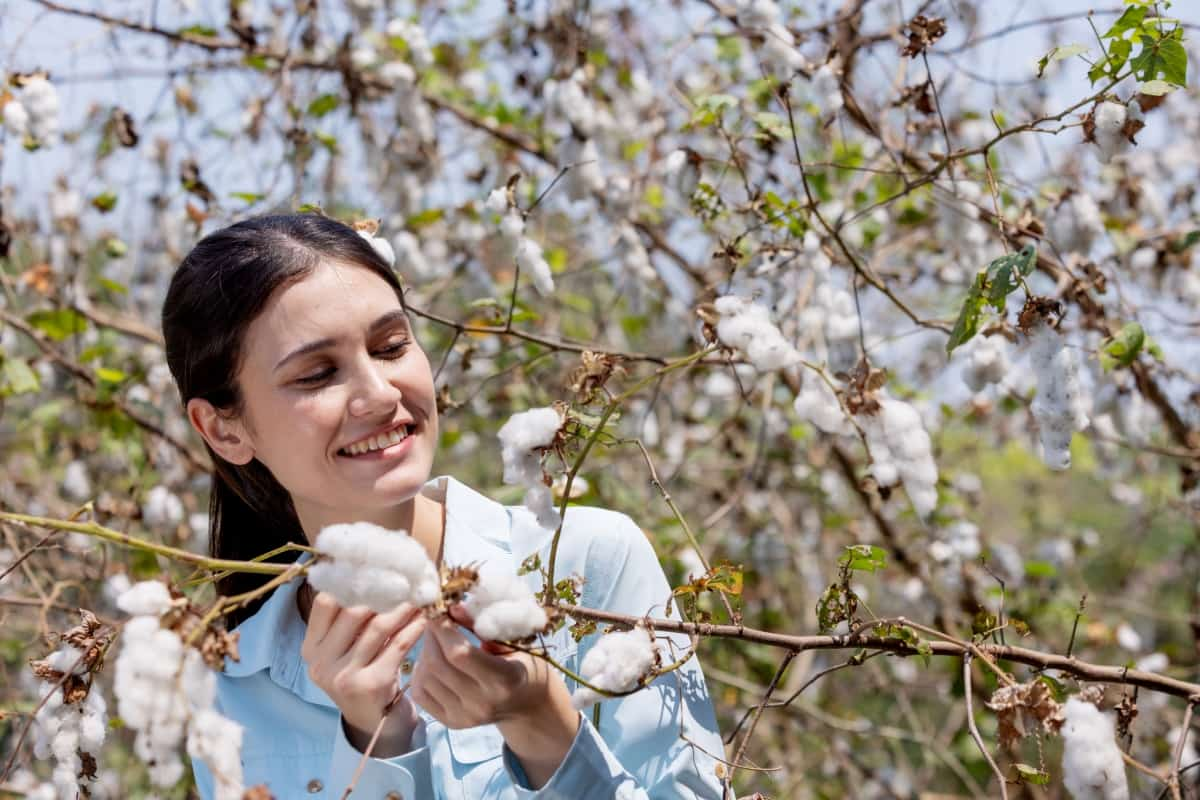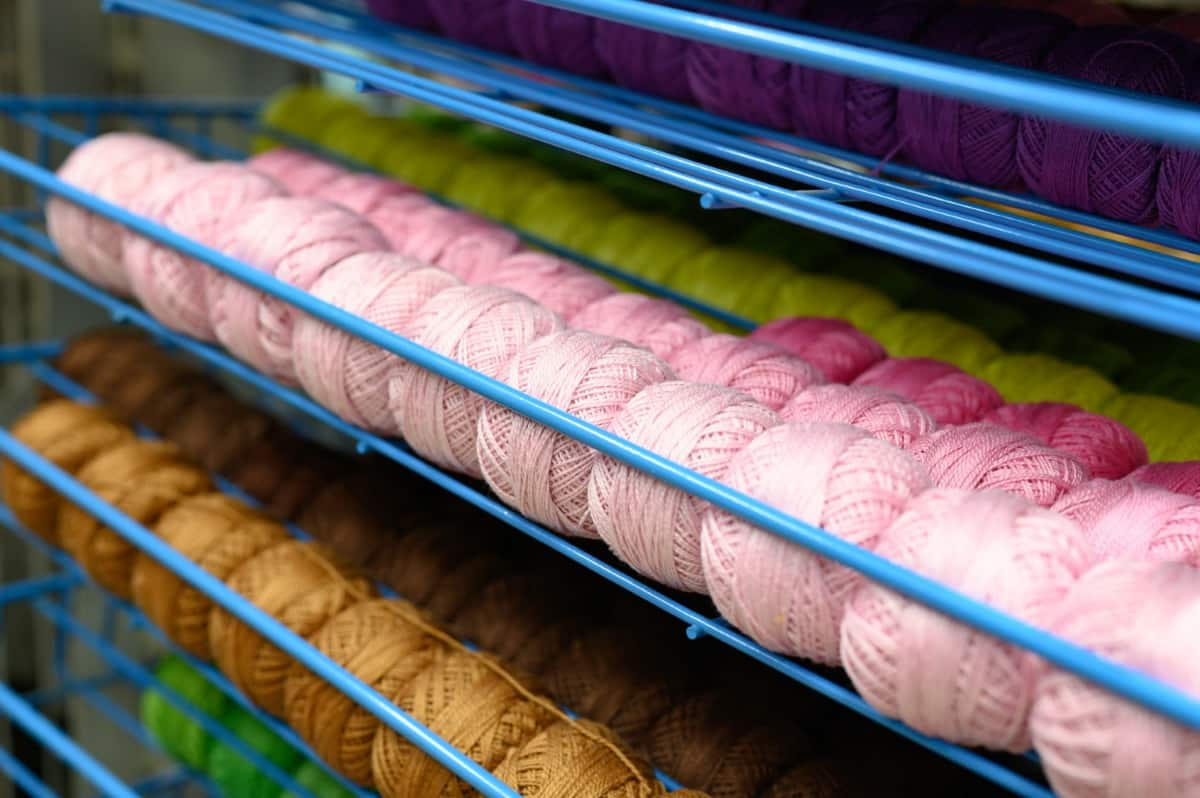When pondering the question, “How do I start a cotton business?” there are many avenues to consider. With its vast potential, the cotton industry has several niches to explore, especially for entrepreneurs looking for the most profitable cotton-based business ideas. Whether you wish to work from the comfort of your home or establish a more tangible setup, there are various profitable cotton based business ideas from home and beyond.
The versatility of cotton allows for numerous business opportunities, ranging from textile manufacturing to cottonseed oil production. Let’s delve into some of these areas and provide insights into the processes involved.
10 Profitable Cotton Based Business Ideas
Cotton Clothing Manufacturing/ Textile Business Startup Cost
Venturing into the world of cotton clothing manufacturing is a lucrative endeavor. It involves sourcing raw cotton, processing it, and turning it into wearable garments. The startup cost largely depends on the scale of the operation. For small-scale setups, a modest space and basic sewing machinery suffice.
However, as the business grows, investing in high-quality equipment and possibly a factory space is essential. The process begins with purchasing raw cotton cleaned, carded, and spun into yarn. This yarn is woven or knitted into fabrics, dyed, printed, and sewn into clothing items.
Cotton Bedding and Linen Production
Beddings and linens are an evergreen demand in households. The production process for cotton bedding and linen isn’t much different from clothing manufacturing. Start by sourcing raw cotton and processing it into yarn. The yarn is then woven into wider fabric sheets suitable for bedding.
After weaving, the fabric undergoes bleaching, dying, and printing processes to provide various designs and patterns. Once prepared, the fabric is cut into desired shapes and sizes for beddings, and the edges are sewn to prevent fraying. Given the consistent demand for bedding and linens, it remains one of the profitable avenues in the cotton industry.
Cotton Bags and Accessories
As environmental concerns rise, cotton bags have gained popularity as a sustainable alternative to plastic. Starting a cotton bag and accessories business can be done on a shoestring budget. The process is straightforward. Begin by sourcing quality cotton fabric. Designs are then sketched onto the fabric, after which they are cut into the desired shapes.
The cut-out shapes are sewn together, and handles are added to form bags. Accessories, like pouches and wallets, follow a similar process. Embellishments and prints can be added for aesthetic appeal. This business idea holds immense potential due to the increasing demand for eco-friendly products.
Cotton Farming
Cotton farming is the foundation of the entire cotton industry. For those with agricultural inclination, this venture can be rewarding. It requires fertile land, quality cotton seeds, and knowledge of agricultural practices. The process starts with preparing the soil by plowing and fertilizing. Afterward, cotton seeds are sown. Proper irrigation and pest control measures are essential during the growth phase. The cotton is harvested upon maturity, ginned to separate the seeds from the fiber, and finally packed for sale or further processing.
In case you missed it: Absorbent Cotton Project Report, Making Plan

Cotton Seed Oil Production
Cottonseed oil results from cotton farming. Once the cotton is ginned, the seeds are left behind. These seeds are a valuable resource for oil extraction. The process starts by cleaning the seeds and removing any impurities. They’re then subjected to a pressing process where the oil is extracted. The residual cake after extraction is used as animal feed. This oil undergoes refining to remove any unwanted substances. Given its wide use in cooking and food processing, cottonseed oil production offers a lucrative opportunity for business.
Cotton Yarn Spinning
The transition of raw cotton into yarn is a pivotal step in the cotton industry. Cotton yarn spinning involves the transformation of raw cotton fibers into yarn suitable for weaving or knitting. The raw cotton is first cleaned to remove impurities. It’s then carded, a process of aligning cotton fibers. Once carded, the cotton is spun, drawn, and twisted into yarn. Depending on the desired thickness and quality, the spinning parameters are adjusted. With the ever-present demand for cotton fabrics, yarn spinning is undeniably profitable.
In case you missed it: Cotton Buds Project Report, Business Plan

Cotton Waste Recycling
One of the sustainable avenues in the cotton industry is cotton waste recycling. Cotton waste, arising from various processes in the industry, is collected and subjected to recycling. The process begins by cleaning the waste to remove contaminants. The cleaned waste is then carded to straighten the fibers. These fibers undergo a spinning process, producing recycled cotton yarn. Though not as strong as virgin yarn, this yarn is suitable for various applications, including producing sustainable garments and accessories.
Cotton Ball Manufacturing
Cotton balls, commonly used for cosmetic and medical purposes, are a staple in many households. The manufacturing process begins with sourcing high-quality raw cotton. This cotton undergoes a thorough cleaning process to eliminate any impurities or debris. Once cleaned, the cotton is mechanically or manually transformed into small, fluffy balls.
In case you missed it: Cotton Seed Oil Manufacturing Project Report

The size and density are consistently maintained using specialized machines or molds. After formation, these balls undergo a sterilization process, especially if intended for medical use, and are subsequently packed in secure, moisture-resistant packaging, ready for distribution.
Cotton Seed Distribution
Cotton seed distribution plays a pivotal role in the propagation of cotton farming worldwide. These seeds, a byproduct of the cotton ginning process, are not just waste but hold value for oil production and as the genesis of new cotton crops. The distribution process begins with the collection of seeds post-ginning. They are cleaned, sorted based on quality, and often treated to enhance germination rates.
After this preparation, they’re packaged in suitable quantities and labeled with essential information about variety and cultivation guidance. Distributors then work closely with agricultural suppliers and farmers to ensure these seeds reach the right hands, facilitating the continuation of the cotton cultivation cycle.
Cotton-Based Handicrafts
Handicrafts made from cotton are a testament to the versatility and adaptability of this natural fiber. These products range from decorative items, like wall hangings and sculptures, to functional products, such as woven baskets and embroidered textiles. Creating these handicrafts often marries traditional artisanal techniques with modern design sensibilities. Raw cotton, cotton yarn, or fabric forms the base material.
By leveraging their skills and creativity, artisans shape, weave, embroider, or sculpt the cotton into intricate designs and patterns. These handicrafts serve aesthetic or functional purposes and help preserve the rich tapestry of traditional craftsmanship, providing a sustainable livelihood to many artisans worldwide.
Conclusion
The cotton industry, with its many opportunities, provides a fertile ground for entrepreneurs to sow their seeds. From farming to recycling, each segment holds immense potential for profitability. With the right approach and a keen understanding of the processes, one can successfully navigate the cotton business landscape.
- Pet-Tech Startups: Innovations for Animal Lovers
- Tech Repair Services: Meeting the Demand for Gadget Maintenance
- Maximizing Rewards: Smart Credit Card Habits for Cashback and Points
- Ultimate Guide to Making Money from Goat Milk Business
- How to Start an Agricultural Value Added Product Business
- Value-Added Business Ideas for Greenhouse: The Best Ways to Make Profits with Greenhouse Farming
- How to Make Profits with Organic Country Chicken: Best Strategies for Beginners
- 10 Value-added Business Ideas for Millets: Low-investment and Highly Profitable
- Why Cleaning Service Business Becoming More Profitable in Metro Cities in India